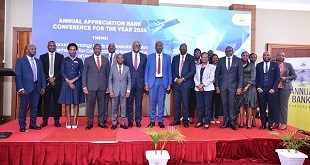
Among people living with HIV the worst viral loads are found among young people
Kampala, Uganda | PATRICIA AKANKWATSA | The Uganda Virus Research Institute (UVRI) is spearheading a transformative initiative to improve viral load suppression among adolescents living with HIV/AIDS (ALHIV) in East Africa.
People with HIV should take antiretroviral therapy (ART) medicines as prescribed to lower the amount of HIV in the body (called the viral load) to enable their immune system to work and prevent illness. This is called viral suppression – defined as having less than 200 copies of HIV per milliliter of blood.
Medicine can lower the HIV viral load to the extent where a test cannot detect the virus. Getting and keeping an undetectable viral load is the best thing people with HIV can do to stay healthy. Another benefit of reducing the amount of virus in the body is that it prevents transmission to others.
According to the Uganda Population-based HIV Impact Assessment (UPHIA 2020- 2021) report, among people living with HIV the worst viral loads are found among young people. The worst are adolescent boys and young men (ABYM) aged 15-24 years where only 43.5% have suppressed viral loads.
These are followed by adolescent girls and young women (AGYW) aged 15-24 with suppressed viral loads levels at just 57.8%.
The prevalence of Viral Load Suppression among adults (ages 15 years and older) living with HIV in Uganda was 75.4%: 78.3% among women and 69.8% among men. It was 97.9% among women aged 65 years and older and 91.0% among men aged 55-64 years.
While speaking in a webinar held on Nov. 30 Prof. Pontiano Kaleebu, Director of UVRI and the Principal Investigator and overall Coordinator of the project, emphasised the project’s groundbreaking nature which underscores its potential to revolutionise ALHIV care in Uganda and beyond.
“This initiative transcends mere discussion. We are embarking on a collaborative journey to fundamentally transform how we approach viral load monitoring for adolescents. By embracing innovation and prioritizing the needs of adolescents, this initiative offers a promising pathway towards enhanced viral load suppression and improved health outcomes for this vulnerable population,” he said.
The webinar held under the topic, “Community and Public Engagement of Adolescents Living with HIV/AIDS on Modality of Viral Load Monitoring to Improve Suppression in East Africa”, recognised the importance of extending support beyond healthcare settings.
Elinor Chemonges, the National Lead Stakeholder Engagement Lead at UVRI, highlighted the crucial role of communities. She said that ALHIV are faced with stigma, mental health concerns, and treatment adherence.
“We have dealt with these adolescents and they say they have access to drugs but they can’t adhere because of poor feeding. Most of them come from poor families and can’t afford nutritious meals. They end up skipping drugs which affects their viral load suppression.
“Families, peers, educators, and community leaders are instrumental in creating an environment that fosters empowerment and well-being for ALHIV,” she said.
Chemonges further emphasised the importance of educational initiatives dispelling myths, reducing stigma, and fostering open dialogue about HIV/AIDS are fundamental to empowering adolescents.
“Many older people have accepted that living with HIV is possible but young people have not been exposed to such information and are scared about their HIV status. By providing access to accurate information and facilitating open discussions, this initiative aims to reduce stigma and empower adolescents to make informed decisions about their health,” she said.
She added: “We are dedicated to closely monitoring the impact of our interventions. We will track changes in viral suppression rates, treatment adherence, and reductions in stigma within communities. These insights will guide our continuous efforts to enhance program effectiveness and ensure optimal health outcomes for ALHIV”.
The project, launched in April 2021, leverages innovative point-of-care (POC) viral load testing technology and a comprehensive community engagement approach to empower adolescents and optimize their health outcomes.
This initiative aligns with the UNAIDS 95-95-95 strategy, aiming to end the HIV/AIDS pandemic by 2030. By prioritizing innovation, collaboration, and community engagement, UVRI is playing a leading role in achieving viral load suppression for all ALHIV. This, in turn, contributes to a brighter future for Ugandan adolescents living with HIV/AIDS and a world free of AIDS.
 The Independent Uganda: You get the Truth we Pay the Price
The Independent Uganda: You get the Truth we Pay the Price


